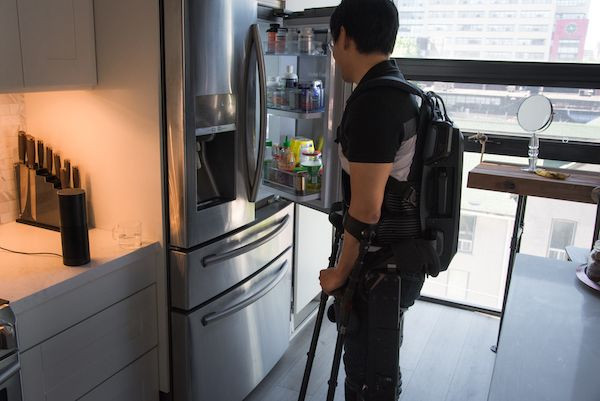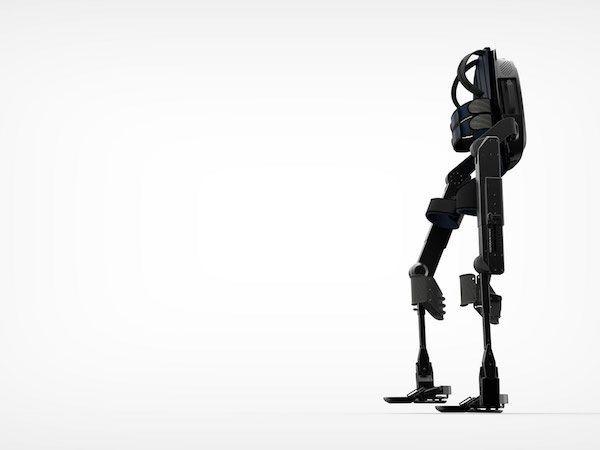Amazon Alexa-Enabled Exoskeleton Could Help Paraplegics, Wheelchair-Bound Individuals Recover

Paraplegics and people who are temporarily wheelchair-bound because of accidents or disease could soon rely on an exoskeleton and Amazon’s Alexa digital assistant to help them in the rehabilitation process. Bionik Laboratories’ ARKE lower body exoskeleton is an Alexa-enabled device designed to assist users in walking and improving their condition.
ARKE was initially made with just tablet control integration. However, Bionik saw the potential of Amazon’s voice assistant as a tool that could facilitate the ease of use of the exoskeleton. Hence, by integrating its product with the Amazon Echo, users can simply say voice commands and have the assistive mobility device up and running.

Bionik has entered around 50 different commands to its ARKE’s software including directions to walk, stand and sit. Users can say “Alexa, stand me up,” and the exoskeleton would make the necessary movements so the user could stand up. Users can also say “Alexa, stop walking” if they want the device to stop their legs from moving. The commands needed to control ARKE are basically patterned after the commands used in doing basic stuff like turning on the lights or increasing the volume of the Echo speaker.
The company has also included the ability to enter a manual mode where users can change certain variables to match their preference. For instance, a paralyzed patient can command Alexa to change the stride length of the exoskeleton to either 12 or 24 inches. The company told International Business Times it intends to add more capabilities over time once the device is subjected to more clinical testing.
Despite bringing Alexa support to the ARKE exoskeleton, Bionik designed the integration in a way that its device works fully even without Amazon’s voice assistant and its smart speakers. ARKE is fully operable without voice commands, with manual controls that users can press and tune. It even has an app that users can install on their mobile device, so they can navigate the different features of the exoskeleton remotely without depending on Alexa.
The exoskeleton is currently in development for the clinical market, but Bionik is also making another lower body wearable assistive product running on the same technology as the ARKE and launching it to the consumer home market in the future. While the company is initially targeting select Asian markets for the ARKE’s consumer release due to the advanced robotics there, it is well aware that the U.S. market, especially the large aging population in the country, has a need for it.
Research shows around 30 million people in the U.S. have a disability that makes them incapable of walking or climbing up a flight of stairs. And although support devices like crutches, walkers, canes and wheelchairs are readily available in the country, robotics is still a far more favorable option mainly because it can offer a wider range of mobility. In addition, more and more people at the present time have become technologically savvy compared to the populations in the previous decades.
Bionik CEO Dr. Eric Dusseux told IBT the company plans to launch its consumer model commercially in 2019. He also revealed it has partnered with Wistron Corporation for the production of the device. To learn more about the lower body wearable assistive product, you can visit Bionik Labs website.
© Copyright IBTimes 2025. All rights reserved.



















